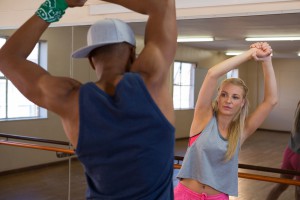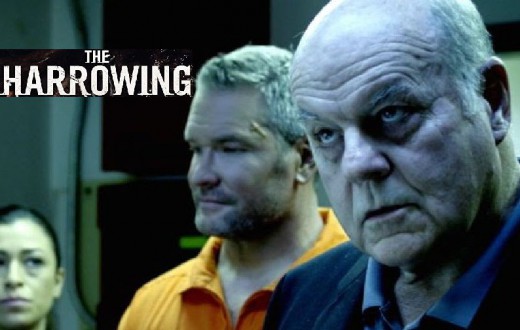Dance and acting are two distinct art forms that have been combined in various ways throughout the history of theatre and performance. The combination can create a powerful experience for both performers and audience members, allowing for a deeper exploration of character, emotion and physicality. Whether it’s through choreographed movement sequences, physical character work or a blend of both, this type of combination offers a unique way to tell stories and create meaning on stage.
Viewpoints is an approach to ensemble-based theatre that emphasizes physicality, spatial relationships and collaboration between performers. What does that mean exactly? Keep reading, but first, what exactly IS ensemble theatre?
Ensemble-based theatre is a form of theatrical production that emphasizes the collaborative efforts of a group of actors, directors and designers. It is characterized by a highly interactive and cooperative approach to performance, in which all members of the ensemble work together to create a cohesive and dynamic theatrical experience. Ensemble-based theatre has its roots in various experimental movements of the 20th century, including the Living Theatre, Jerzy Grotowski’s Polish Laboratory Theatre, and Augusto Boal’s Theatre of the Oppressed.
In ensemble-based theatre productions, actors often participate in extensive physical training and improvisational exercises designed to foster trust and communication between performers. The goal is to create an atmosphere in which each member of the ensemble can respond intuitively to their fellow performers without self-consciousness or hesitation. (It kind of reminds me of improv.)
 Choreographer Mary Overlie was one of the first people to describe the Viewpoints technique, while for many worldwide dance and theater traditions and throughout history, the word “Viewpoint” has often referred to six distinct aspects of onstage performance: space, shape, timing, emotion, movement and story.
Choreographer Mary Overlie was one of the first people to describe the Viewpoints technique, while for many worldwide dance and theater traditions and throughout history, the word “Viewpoint” has often referred to six distinct aspects of onstage performance: space, shape, timing, emotion, movement and story.
The Viewpoints approach is based on the idea that all performance is made up of two basic elements: time and space. Viewpoints identifies six different Viewpoints of time and six different Viewpoints of space, which are used as a framework for creating movement and staging in a performance. The Viewpoints of time include duration, repetition, tempo, kinesthetic response, shape and gesture, while the Viewpoints of space include spatial relationship, kinesthetic response, shape, gesture, architecture and topography.
Very confusing! So I found a video that shows Viewpoints in action.
In practice, performers working with Viewpoints will use the twelve elements to create a shared language of movement and staging, which allows them to work collaboratively to create a cohesive ensemble performance. By emphasizing physicality and spatial relationships, the Viewpoints approach encourages performers to stay present in the moment and respond organically to each other’s movements, creating a sense of connection and spontaneity in the performance. If you watched the video, it was hard to recognize who in the group was responsible for each change. It was as if the group fed off each other – as if they could read everyone’s minds.
Key Benefit of Viewpoints
It’s worth noting that the Viewpoints approach is often used in conjunction with other performance techniques, including Suzuki Method and Laban Movement Analysis. By combining different techniques and approaches, performers and directors can create a unique and multifaceted performance experience that is truly their own.
Which leads me to… what are the Suzuki Method and Laban Movement Analysis? I feel like I’m going in circles here, which, now that I think about it, is very Viewpoints of me!
The Suzuki Method is a physical training technique developed by Japanese theatre artist Tadashi Suzuki. The method is based on a series of exercises that aim to develop a performer’s strength, stamina and focus. These exercises often involve repetitive movements and vocalizations, and are designed to help performers develop a heightened awareness of their bodies and their physical presence on stage. Here’s a video with Stephanie Courtney, a Suzuki and Movement Tutor, and her students.
Laban Movement Analysis (LMA) is a method for analyzing and describing movement invented by Hungarian dance artist Rudolf Laban. LMA divides movement into four categories: body, effort, shape and space, and provides a framework for analyzing how these elements combine to create different types of movement. Rae Bell shows examples of LMA in this video.
By incorporating Viewpoints into your performance practice, you can develop a deeper understanding of physicality and ensemble work, and create more powerful and engaging performances that connect with audiences on a visceral level.







